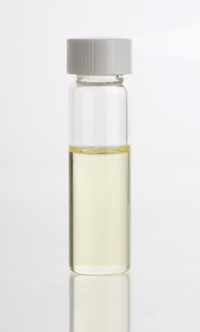
Photo from wikipedia
Nowadays, essential oils (EOs) have a wide use in many applications such as in food, cosmetics, pharmaceutical and animal feed products. Consumers preferences concerning healthier and safer foodstuffs lead to… Click to show full abstract
Nowadays, essential oils (EOs) have a wide use in many applications such as in food, cosmetics, pharmaceutical and animal feed products. Consumers preferences concerning healthier and safer foodstuffs lead to an increased demand for natural products, in replacement of synthetic substances, used as preservatives, flavorings etc. EOs besides being safe, are promising alternatives, as natural food additives, and much research is carried out, on their antioxidant and antimicrobial activity. The initial purpose of this review is to discuss conventional and "green" extraction techniques along with their basic mechanism for the isolation of EOs from aromatic plants. This review aims to provide a broad overview of the current knowledge about the chemical constitution of essential oils while considering the existence of different chemotypes, since bioactivity is attributed to the chemical composition - qualitative and quantitative of EOs. Although, the food industry primarily uses essential oils as flavorings, an overview on recent applications of essential oils in food systems and active packaging is provided. EOs exhibit poor solubility in water, oxidation susceptibility, negative organoleptic effect, and volatility restricting their use. Encapsulation techniques are proven as one of the best approaches to preserve the biological activities of EOs and minimize their effects on food sensory qualities. Herein, different encapsulation techniques and their basic mechanism for loading the essential oils are being discussed. EOs are highly accepted by consumers, who are often under the misconception that "natural" means safe. This is, however, an oversimplification, and the possible toxicity of EOs should be taken into consideration. Thus, focus on the current EU legislation, safety assessment and sensory evaluation of EOs are endeavored in the final session of the current review. This article is protected by copyright. All rights reserved.
Journal Title: Journal of the science of food and agriculture
Year Published: 2023
Link to full text (if available)
Share on Social Media: Sign Up to like & get
recommendations!